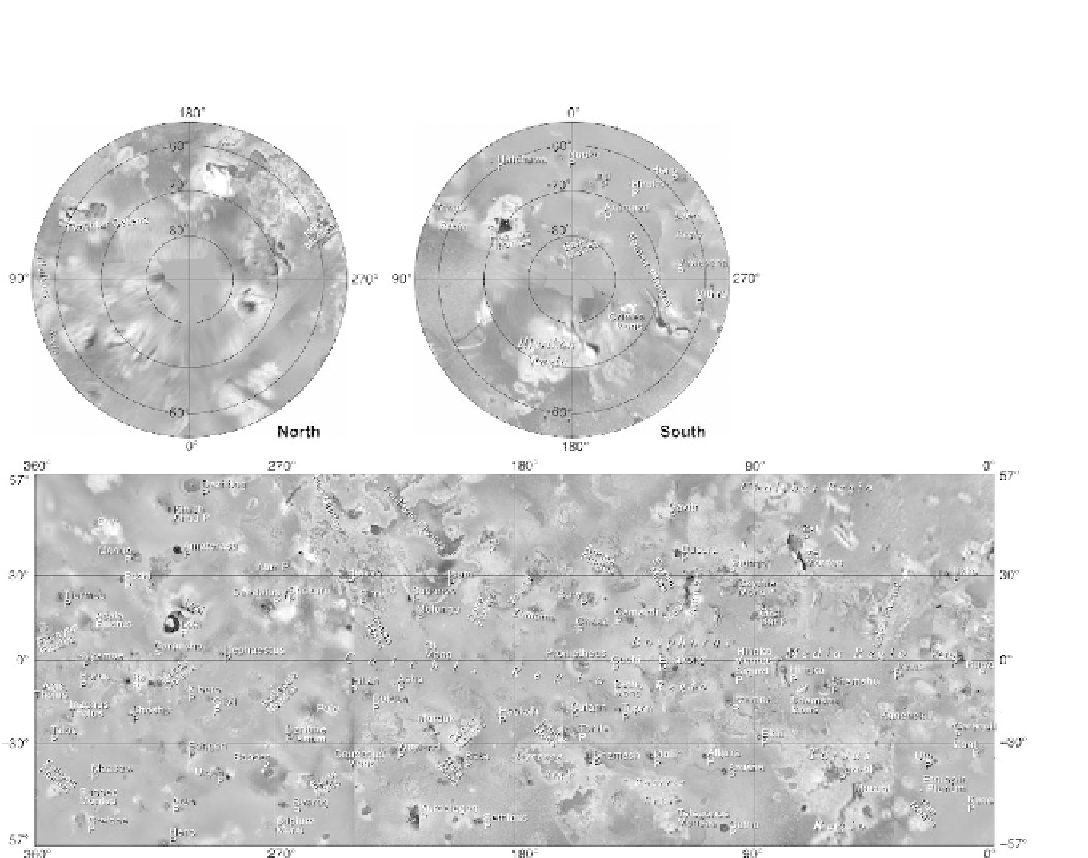Geology Reference
In-Depth Information
Figure 8.6. A map of Io with prominent named features. Reprinted from Icarus, 135, McEwen, A., Keszthelyi, L., Simonelli, D. et al., 1998,
181
-
219, with permission from Elsevier.
flows are erupted and sulfur-rich materials blanket the
surface, convert to more stable forms, and change color.
From estimates of the volumes of volcanic materials
erupted, the
flux of impacting objects in the Jupiter sys-
tem, and the lack of impact craters seen in imaging data, Io
is thought to be volcanically resurfaced at a rate of ~1 cm/
yr; thus, impact craters probably do form, but they are
buried so quickly that none are preserved within the
visible record. This suggests that Io is volcanically turning
itself
8.4.1 Impact features (none!)
Even before the volcano discovery image had been taken,
Io presented an intriguing face to the Voyager cameras as
the spacecraft drew closer to Io. From a distance, dark
circular smudges set against Io
and apparently has done so for a long
time, as reviewed by Ashley Davies (
2007
). This means
that Io has one of the youngest surfaces in the Solar
System.
“
inside-out,
”
s red and yellow surface
were seen in the low-resolution pictures. At
rst, the
smudges were thought to be impact craters, a reasonable
assumption because craters had been seen on every solid-
surface planet and moon explored up to that time. But, as
Voyager 1 drew closer to Io, the pictures became sharper,
and the dark areas were resolved to be volcanic craters and
calderas, many of which were seen to have lava
ows
extending from their rims. No impact craters were seen
then or by later missions.
'
8.4.2 Volcanic features
More than 400 volcanoes are documented on Io, and they
re
ect both effusive and explosive eruptions. Some of the
volcanoes discovered during the Voyager mission were
seen to still be active some 28 years later during the New


